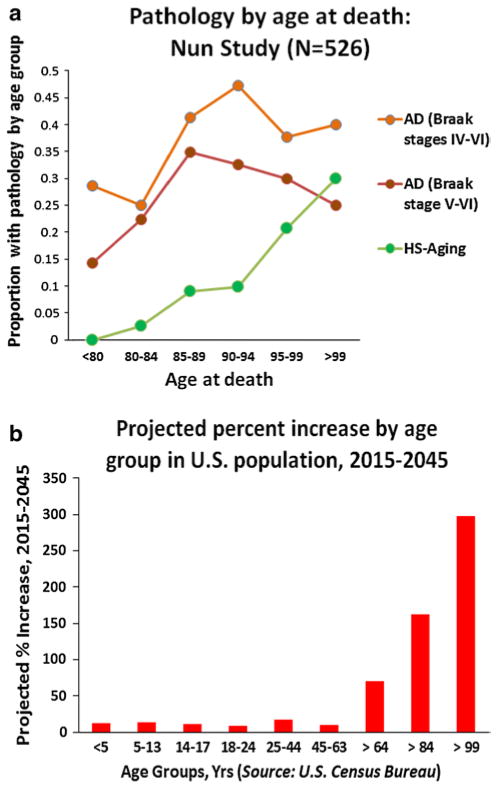Fig. 5.
Data related to HS-Aging epidemiology underscore the large, and increasing, public health impact of HS-Aging. Data from The Nun Study [73, 110] among research subjects with pathologic data (N = 526). The proportion of individuals with moderate or severe Alzheimer’s disease (AD; moderate or severe neuritic amyloid plaque pathology and Braak stages using two different threshold cutoffs, Braak IV and above and Braak V and above) are compared to the proportion of individuals with HS-Aging pathology. Note that a significant number of patients had both pathologies as would be expected. This is a birth cohort that had been followed for many years, incorporating a full spectrum of cognitive impairment, without many of the biases that are linked to dementia clinics, thus insights into the population-level epidemiology. Median age of this cohort is >90 years of age at death. b The late-life increase in HS-Aging pathology can be viewed in context of projected demographic increases in numbers of very old persons predicted by the U.S. Census Bureau. Source: http://www.census.gov/population/projections/data/national/2012/su mmarytables.html

